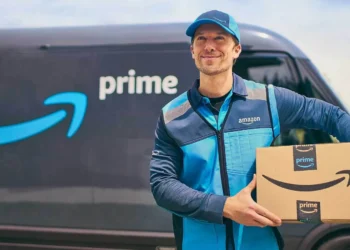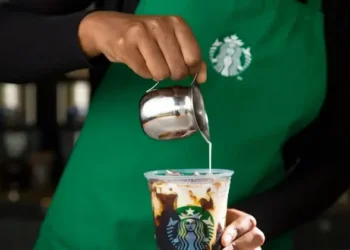A CRM, like every other tool, can either bring remarkable or embarrassing results depends on its level of usage. Here’s the thing, a good CRM cannot make up for poor implementation and strategy. It just can’t.
Beyond getting a great CRM, there should be a strategy in place that’ll streamline the users’ activities. It’s like a compass that directs the captain on the route and how best to navigate the turbulent wind.
What a CRM Strategy Means
A CRM Strategy determines how a company plans to generate leads, acquire, retain, and establish quality customer relationships. Getting CRM software is the first step; having a plan is the second and primary step for business growth.
CRM strategies focus on the “how.” It highlights the underlining plan on how you intend to increase sales and grow your business using CRM software. Often, most CRM failures are mainly due to a lack of strategy, not software issues.
Complementing CRM software with a great CRM strategy for B2B is what breeds success. We’ll be looking at 5 Underrated CRM strategies below. By the way, if you’re yet to get a CRM software that aligns with your business goals, here are a few suggestions to try.
- HubSpot: This is an all-in-one marketing software that’ll help your team drive leads and revenue, save time, and improve customer experience.
- Zoho: empowers your team to automate sales and marketing processes, engage customers, and convert more leads.
- FreshSales: This is an intelligent and complete solution to boost engagement and discover leads.
- Pipedrive: Streamline your sales pipeline, access real-time analytics, and 10x your sales with Pipeline.
- Less Annoying CRM: Less Annoying CRM helps small business owners manage contacts and automate lead generation follow-ups.
5 Underrated CRM Strategies for B2B
- Reward and loyalty programs
- Automate customer support
- Message tracking
- Strategic lead form placement
- After-sales customer engagement
1. Reward and Loyalty Programs
Customer reward and loyalty programs recognize and reward customer loyalty to a brand. It’s a way of encouraging your customers to keep patronizing and referring your brand to their friends and colleagues.
Rewards and Loyalty programs are consistent with Robert Cialdini’s first principle of persuasion – Reciprocity. The principle states that people don’t like the idea of feeling obligated; they’ll tend to return a favor no matter how small.
Following the reciprocity principle, when you appreciate your customers, they’ll feel indebted to keep buying from you. Humans like being loved and appreciated: It gives them that sense of belonging and massages their ego.
With a CRM, establishing a reward and loyalty program becomes easy. Because all your customer’s information and purchase history are already accessible on your CRM, you don’t need to start collating them manually. You’ll need to develop the reward and loyalty program and start implementing it right away to grow your sales and referrals.
It’s worth noting that reward and loyalty programs are not solely for customers; you can use them to acquire new customers. Some organizations create loyalty programs to attract new customers and fill their sales pipeline.
Reward and Loyal Programs Ideas
- *Refer a Friend: “**Refer a friend and earn” is one of the most popular types of loyalty which still works. Companies promote referral marketing by offering the customer a bonus or reward for referring a friend.
- Join Our Community: Humans love to be part of a community. Offer them the opportunity to be part of a community as a reward for taking the required action. REI, an outdoor merchandiser, offered their customers access to an exclusive community if they’ll spend more on the company’s products and saw a whopping increase in sales.
2. Automate Customer Support
Another CRM strategy for B2B that comes to mind is customer support automation. B2B products are usually high-end products that need deliberation and research before purchase. In the buyer’s research phase, they’ll visit multiple websites with similar solutions and want to ask questions where they want clarification.
Automating customer support helps you provide instant answers to customers’ queries. According to a recent finding, 55% of businesses that use chatbots generate more high-quality leads. The handwriting is clear; people would instead do companies that will attend swiftly to their queries.
Action Point: Contact your sales or customer experience team to collect the frequently asked questions from your customers, and add it to your CRM chatbot. Also, provide an option to chat with a sales representative to attend to people that prefer human communication.

3. Message Tracking
There’s a common phrase in marketing that says, “what gets measured gets improved.” It’s true for marketing and also true for CRM. Sending newsletters without looking at your metrics is like winking in the dark with the hope that someone would see you.
Communication is not complete until the other understand your message or language. CRM comes with a tracking technology that enables you to track your newsletters and emails. CRM can track metrics like open rates, clickthrough rates, skim rates, and heatmaps.
Knowing these metrics can help you improve your newsletters and grow your email conversions. Message tracking is an essential CRM strategy for B2B firms that want to grow their revenue through email marketing.
Action Point: Experiment with multiple emails and check your metrics for the best-performing ones. Repeat the process till you’ve got the newsletter or email with the highest conversions, check what made it successful, and double down on it.
4. Strategic Lead Form Placement
Lead forms enable businesses to capture relevant contact information from their online channels. Most social media platforms now offer an option for advertisers to generate leads with leads ads.
Strategic lead form placement is an underrated CRM strategy for B2B firms. CRMs empower business owners to create lead forms and also synchronize their lead submissions from social media channels.
Action Point: Use lead magnets to attract web visitors to fill your lead forms. Also, place strategic lead forms in between blog posts to convert readers into subscribers. You can do all of this with a CRM.
5. After-Sales Customer Engagement
To improve your customer retention rate, you need to prioritize continuous customer engagement. After-sales customer engagement is an opportunity for B2B firms to delight their customers after-sales. It also lets you discover upsell opportunities.
Businesses need to be creative in coming up with ways of engaging their customers. Some popular engagement channels are newsletters, social media, webinars, and live chats. Interestingly, CRMs ultimately simplify the customer engagement process.
Because a CRM assembles all your data in a single data, it’s easy to engage your customers based on their level of transaction with your business.
Action Point: Create multiple email sequences to engage your customers at different stages of their journey with your business. From the emails, you’ll discover the ones they respond to the most. That’s your goldmine—Upsell products based on their interest to increase your sales.
In Conclusion
A CRM strategy for B2B is what guarantees a boost in customer engagement, predictable lead generation, and sales growth. Go through the strategy once more, and start implementing them right away. Execution is key. Remember; a CRM is a tool; its results are directly proportional to your level of knowledge, strategy, and implementation.





























